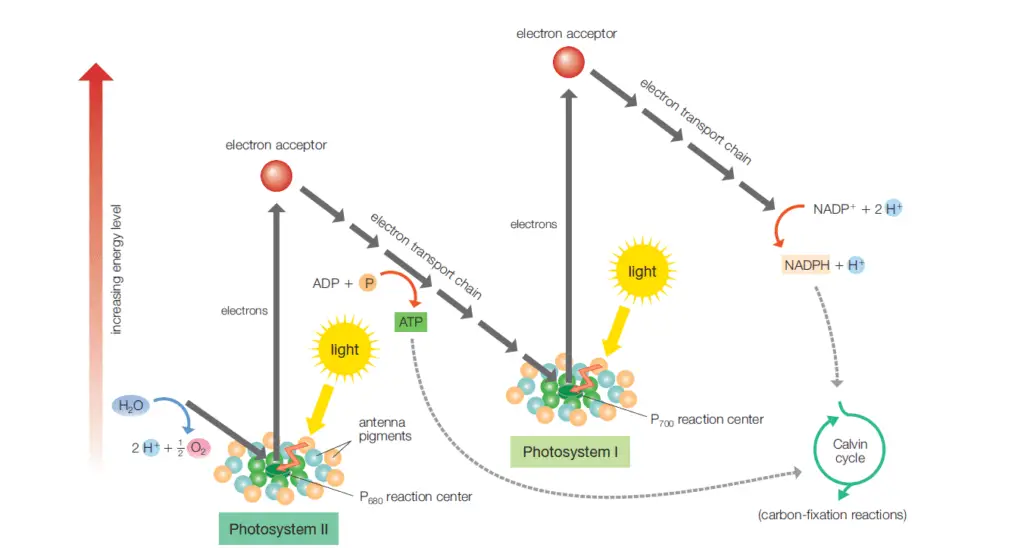Photosynthesis – class 11 revision notes
Last updated on February 5th, 2022 at 04:48 am
Schematic diagram of the energy levels of electrons during the light reactions of photosynthesis | Z scheme diagram with description
Light energy absorbed by pigment molecules in the antenna complex is transferred to the special “chlorophyll a” molecules in the reaction center of photosystem II, thereby exciting electrons to a higher energy level.

The excited electrons are replaced by electrons that are generated when water is split in photolysis. The splitting of water also yields protons and oxygen.
The excited electrons are passed to the first molecule in a series of electron receptors that make up the first electron transport chain, with some of the energy being used to form ATP from ADP and a phosphate group.
The electrons are passed along to the reaction center of photosystem I, where light once again is used to excite them.
The re-excited electrons are passed along a second electron transport chain, finally being accepted to form NADPH and protons.
Both the ATP and NADPH formed in the light reactions can be used in the carbon-fixation reactions. This zigzag pattern of electron energy levels is called the Z scheme.
